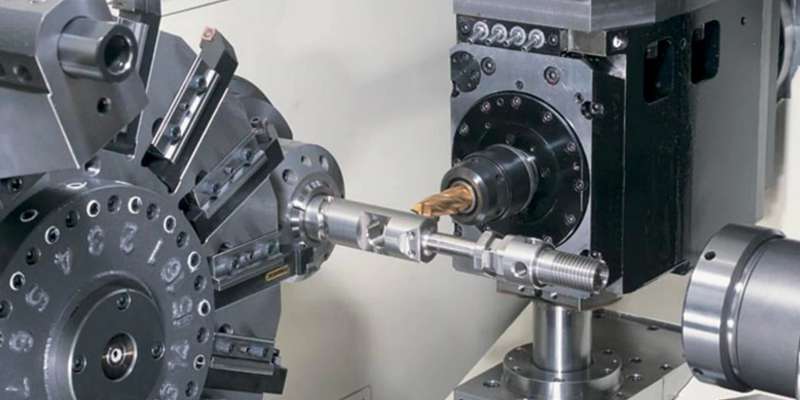- November 11, 2022
Swiss machining is a part manufacturing process commonly used for tiny such as the component of watches. It originated in watch-making Switzerland but is now applicable in several industries globally. This article will extensively discuss the process, its mechanism, properties, comparison to other manufacturing processes, and overall use in part manufacturing.
What is Swiss Machining?
Swiss machining is a set of manufacturing techniques, such as Swiss turning and milling, that uses specialized tool-cutting machines to convert metal stock into the required part. It uses a Swiss machine to manufacture very small parts with very tight tolerances.
The first Swiss machines are traditional, i.e., they don’t have a computer control center. However, there is now a swiss-designed CNC machine. Hence, some people use the term “Swiss CNC machining” to describe its use in the CNC industry.
How Do Swiss Machines Work?
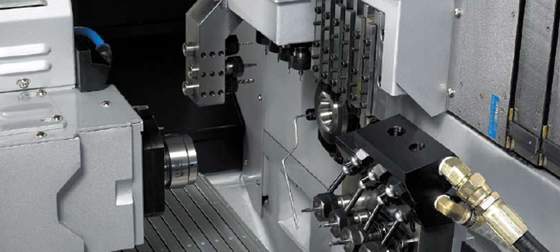
Swiss machines go by many names, such as the Swiss screw machine and the Swiss lathe. Their peculiar design makes them highly precise and accurate.
The machine has several axes and differs from conventional CNC machining by its ability to turn and move to and fro along the Z-axis. The operator feeds the bar stock through the guide bushing (already mounted with the cutting tools).
As a result of the arrangement, the guide bushing provides strong support regardless of the workpiece length. The force is right where the material emerges from the bushing, which minimizes the tool action on the part and increases precision. Furthermore, it allows you to perform several operations at a time.
Advantages of Swiss Precision Machining
Swiss precision machining has some advantages that make it more suitable for certain applications than other parts manufacturing techniques. Most times, industries prefer to use the process due to its high accuracy, level of technology, and standard features. Here are some benefits you stand to gain if you choose the process:
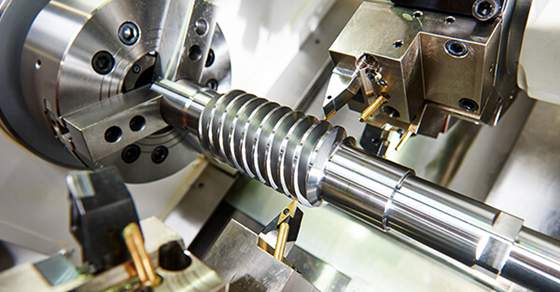
Efficiency
Swiss machines have multiple axes that allow you to perform multiple operations simultaneously. As a result, compared to other lathes, they are efficient without regard for part design complexity.
High Level of Precision
There is also a high level of precision, making it applicable to manufacturing complex-shaped parts with tight tolerances. Furthermore, their mechanism of action ensures that the tool force does not affect the workpiece, which improves precision.
Suitable for A Small Part
The original use of the machining procedure is for small parts such as Electronic parts and a watch. While this has improved due to technological advancement, the tech advancement expands its suitability for small parts. Furthermore, a high level of automation reduces human intervention or control.
Comparing Swiss Machining vs Traditional Machining
The main difference between Swiss and traditional machining is that traditionally machined parts are not usually accurate compared to Swiss machined parts. Swiss machines have high-level precision, while traditional machining relies more on the steady hand and mind of the operator. As a result, the accuracy and repeatability are low.
Another difference between the two machining methods is that conventional machining is more suitable for machining regular parts, while Swiss machining is effective for handling complex designs.
Comparing Swiss Machining vs CNC Machining
Both Swiss and CNC machining are similar in several aspects. However, compared to CNC machining (a DFM process), Swiss machining has its own benefits.
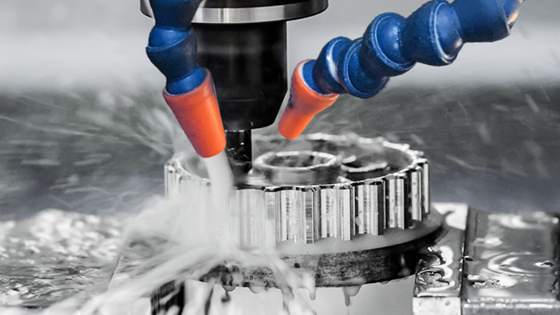
Although we can also say that they both use programming languages such as g-code and m-code. Now, the question is, what singles out the process of CNC machining? Below are four differences between Swiss and CNC machining. Let’s explore:
1. Faster Cycle time for High Complex Parts
Modern Swiss lathe features about 7 to 13 axes. Owing to this, it can carry out numerous operations faster on the part in just a single machining cycle. These operations include drilling, end-face grooving, Swiss milling, thread cutting, cut-off, and many more.
However, conventional lathes like that of CNC feature only 3 to 5 axes. It might not be able to complete the machining of a part in a single cycle. Thus, the cycle time for CNC lathes reduces, and productivity is limited.
2. Coolant Type
Swiss-type lathes usually achieve better tolerances due to their coolant nature. Most times, Swiss machines require oil to function better. Unlike water, oil has a lower heat capacity. So, compared to CNC, Swiss machining transfers heat away from the tool’s cutting edge and cools down easily.
3. Segmental Machining
Unlike CNC machining, Swiss machines such as the Swiss lathe produces parts in segments. This is important to ensure the resultant dimensions fall within the desired tolerances.
4. Guide Bushing
Generally, machining involves clamping the bar material in a collet that can slide toward the headstock behind the guide bushing. In the case of Swiss machining, the cutting tool operates close to the guide bushing, thereby preventing any form of deflection. Therefore, the Swiss machine has a moveable headstock and can remain within the desired tolerances irrespective of the length of the workpiece.
Conventional CNC machining, however, works differently. The operator fixes the workpiece at the collet of the main spindle. As a result, this machining is not ideal for longer workpieces as deflection is likely to occur.
When Should You Pick CNC Swiss Machining Over Traditional Machining?
Swiss CNC machining is one of the most productive machining techniques in part machining. Aside from its low cycle time, it is suitable for machining the most intricate Swiss machined parts. There are other reasons you should consider CNC Swiss machining over traditional machining discussed below:
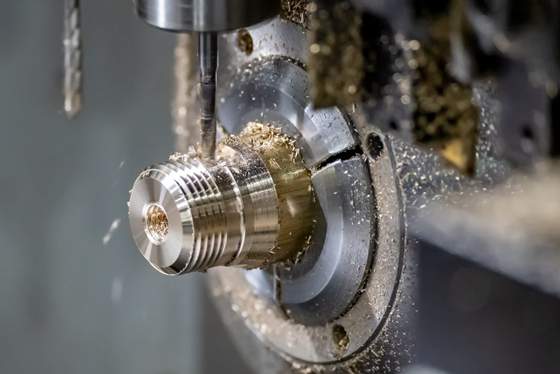
Complex Designs
Swiss CNC machining is a better choice over traditional machining due to its suitability for complex designs. The process encourages using CAM (Computer-Aided Manufacturing) software, making it suitable for complicated parts. As a result, there is an improvement in product design and a reduction in error due to less human involvement.
Setup Time
Swiss precision machining has special features such as the onboard automatic setting probe and a high-damping composite casting (HDCC) that reduces the cutting tool’s setup time.
Designing for Manufacturing (DfM)
DfM is a part of part manufacturing that involves optimizing the product design for easier manufacturing and assembling. The introduction of CNC to Swiss machining will make it easier for an effective and efficient manufacturing process compared to the conventional method
Useful Tips for Swiss CNC Machining
It would be best to note several things when using swiss CNC machining. For example, you have to choose the right CNC Swiss machine and be capable of operating the machines. Nevertheless, the tips below will help you reduce cost and machining time.
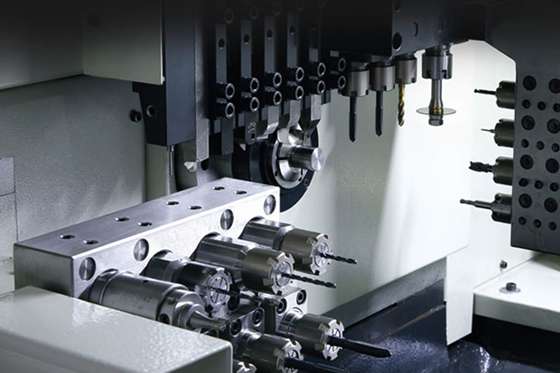
Tip #1: Model Drawing
The drawing of the model must be very accurate, clear, legible, and precise for an accurate machining process. Furthermore, it will allow the CNC operator to understand and machine your part. A correct and accurate model drawing will help you improve the part’s tolerance, dimensions, tolerances, and surface finish.
Tip #2: Standard-Sized Hole
Although the Swiss machining technique is suitable for small and deep holes, you should ensure that you use standard-sized holes. Using a standard-sized hole will reduce the difficulty and cost of machining.
Tip #3: Avoid Sharp Corners
Drill bits are majorly round, making it difficult to machine sharp inner corners. As a result, you need to avoid sharp corners in your design during Swiss milling. For projects where this is necessary, you can try Electric discharge Machining or abide by the options the part manufacturing service gives you. Furthermore, you should ensure that the corner radius is larger than the drilling tool’s diameter to prevent chatter and premature tool wear.
Tip #4: Tolerance
Tolerance in part manufacturing can increase the swiss CNC machining cost and time. As a result, you should only assign strict tolerances in important sections of the part.
Tip #5: Wall thickness
Thin wall thickness can cause chatters in metal and warping and softening in plastic during machining. Such defects will reduce the part’s surface quality and accuracy.
Applications of Swiss Machined Parts
Swiss machining is applicable in many industries for manufacturing precise and small parts. For example, swiss machined parts are components of firing pins, medical devices, shafts, timepieces, and others, as illustrated below.
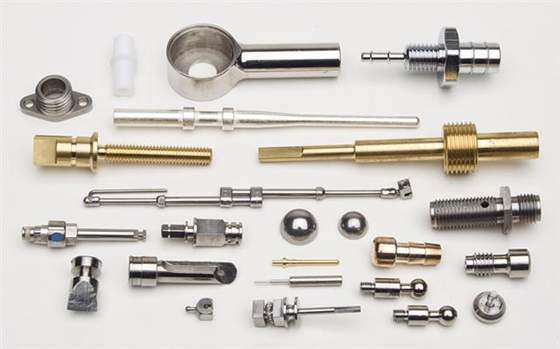
Aerospace Industry
The process is applicable for manufacturing various aerospace mechanical parts such as motors, wings, wheels, and cockpit control. The process is ideal machining because it can achieve precision due to its tight tolerance.
Defense Industry
Swiss machines are highly accurate, making them suitable for parts with complex geometries used in making helicopters, missiles, ships, and tanks.
Consumer Electronics
Components used in consumer electronics require processes with tight tolerances, precision, higher quality, smooth finishes, and intricate forming. As a result, machines such as Swiss lathes are applicable in making components, lens housings, connectors, and connectors. Furthermore, it applies to semiconductor-based devices such as electronic panels, controls, interfaces, printed circuit boards, and controls.
Medical Devices
The medical part manufacturing industry is another industry that uses Swiss machines. Common medical Swiss machined parts include hinges, anchors, electrodes, and pull rings used in medical devices in the surgical, drug delivery, etc., and other fields.
Automotive Industry
Swiss machines are applicable in making components such as bushings, shafts, fuel-injection components, pins, brake system components, etc. It is very popular among automotive part manufacturers for its high accuracy.
Choosing the Right Precision Machining Services for Your Projects
Industries use machining methods to manufacture and customize parts that meet standard requirements. Meanwhile, to get the best-machined parts for your industrial needs, you can make precision machining your go-to.
More importantly, there are various precision machining services, and you can trust WayKen to offer the best service to you. Just so you know, we offer precision milling, precision turning, finishing operations, and other machining services. Our experienced engineers will perform a DFM analysis of your project to find the right solutions to get a good result. We also provide 100% parts inspection and competitive prices.
Thus, for your projects that require precision machining, you can consult WayKen to get a quote and DfM feedback.
FAQs
Why is a Swiss machine called a Swiss screw machine?
The Swiss machine got its other name, “Swiss screw machine,” because it originates from Switzerland. The Swiss watchmakers introduced and tested the machine and applied it in cutting out precision parts on a rotary slide.
What materials are compatible with Swiss machining?
Swiss machined parts come from various materials, including nickel, bronze, brass, thermoplastic, copper, carbon steel, stainless steel, aluminum, titanium, etc.
What does “Swiss-type lathe” mean in CNC machining?
A Swiss-type lathe in CNC machining is a turning machine that feeds the stock through a guide bushing.

